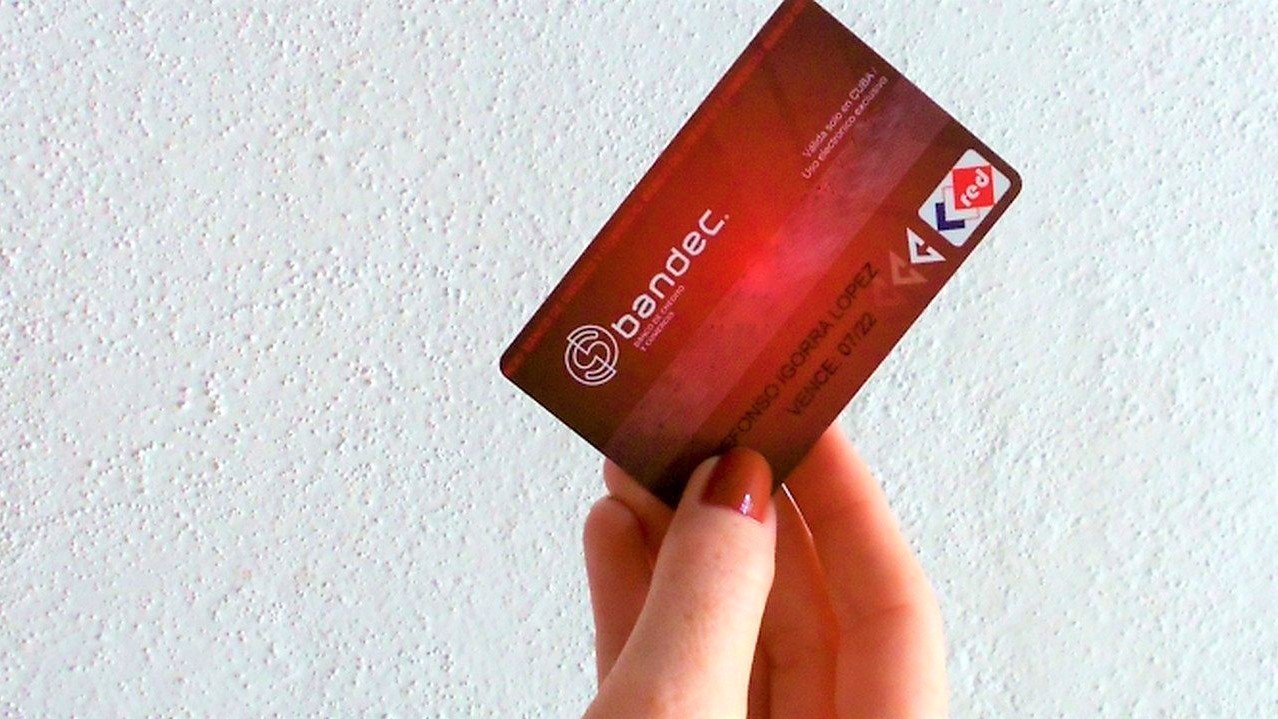ECC’s Travel Tips: Payment options for Americans in Cuba!
by Colin Ganley, Founder of Experience Cuban Culture
Introduction:
For over two decades, I have been traveling to Cuba and have experienced 3 currencies, inflation, the elimination of a currency, and the wild fluctuation of exchange rates. Today there is a new payment method that makes shopping a little bit more clear (in addition to cash), the MLC Card. Today, I would like to share ECC’s 5 Tips for Americans using money while in Cuba as well as dive into an overview of Cuba’s new MLC Card, a convenient and cashless way to spend money on the island.
Navigating Cuba's Monetary Landscape:
For many American travelers coming to Cuba, the monetary situation can seem quite complex. One of our roles at ECC is to reduce the confusion and provide our clients with tools to ensure they get the best value and experience when spending money in Cuba.
The currency situation in Cuba can leave even an economist mystified. Due to the United States embargo, credit and debit cards (tied to an US person) are not accepted on the island. This limitation has resulted in most American travelers relying on cash as their primary means of payment. While cash is a good option, it poses certain risks and inconveniences, such as the potential for theft or loss, currency exchange fees, and the necessity of carrying a wad of bills.
Additionally, the currency landscape is always changing in Cuba. Prior to the pandemic, Cuba had a dual currency system with two types of pesos, CUC and CUP. In 2021 the CUC was removed. Surprisingly, unifying their currencies has made Cuban shopping even more confusing! What follows are tips and background so that you can focus on enjoying yourself and experiencing Cuban culture! So without further ado, here are our 5 easy tips for handling money in Cuba.
5 Tips for Americans spending money in Cuba :
1. Bring USD (Cash): Taxis, restaurants, casa particulares, galleries, and privately owned shops will gladly accept your USD. Believe it or not, some places in Cuba won’t even accept CUP (the Cuban Peso). Rarely will you find a place that doesn’t accept foreign currency, but there are a couple of instances where that might be the case. If you’re in an establishment that seems like it’s primarily for locals, just ask in advance what currencies they accept. Additionally, it is important to bring cash notes that are either new or in very good condition because worn/torn notes will not be accepted. So, ensure that while you stay in Cuba, you take care of the integrity of your bills so that they remain in good condition for use.
2. Invest in an MLC Debit Card (NEW): State-owned businesses, like medical facilities, grocery stores, hotels, tourist offices, Habanos Stores, and restaurants, tend to be cashless. If you obtain an MLC card, you’ll have the option to shop there. Credit cards affiliated with US banks rarely work as we’ve mentioned previously. However, you can buy an MLC pre-paid debit card at many CADECA exchange houses as an extra option. Pre-paid debit cards come in denominations of US $50-$1000 and can be purchased with any acceptable currency. There are a few things to be aware of with MLC Cards:
There is a US $5 charge to purchase these cards.
They are non-refundable, but you have two years to use them.
You must have your passport on hand at the time of purchasing your MLC card.
It's also stated that in many places, you cannot use USD to purchase an MLC card; however, that was not the case at the hotel Grand Aston in May. The hotel was willing and happy to exchange USD for an MLC prepaid debit card. This may not always be the case, as circumstances often change between trips, so we will continue to monitor the ease of exchanging USD for MLC Cards.
3. Know the Value of a Dollar: Cuba has two exchange rates: the government official rate and the informal (aka black market) rate. Understanding these rates is essential, as there's a significant difference. For example, at the time of this writing, per each USD, you'll get 110 CUP at the official rate and approximately ~180 CUP on the black market, a 70 CUP per dollar difference. USD cash is officially exchanged at 120 CUP, but you pay an 8% conversion fee instead of the 2% fee charged when exchanging EUR or any other currency so it nets out to 110 CUP. The government sets official rates, and you can find them on the CADECA website. For informal rates, check out the daily rate at El Toque. But remember, supply and demand dictate rates, so what you exchange may vary.
At state-run hotels like the Nacional, the exchange rate is usually the official rate
4. For Simplicity, Carry Some CUP: The currently insane inflation levels mean using CUP can be cumbersome to carry and mentally taxing. That's why some travelers choose to pay in foreign currency. It is more convenient. Paying with foreign currency will mean that you pay a little more than with CUP. Although it won’t likely be your main payment method, you should have a little CUP just in case (it’s useful for tipping amounts less than $5), and you will accumulate it by getting change in CUP anyway. For example, to tip a musician $1, you would give 150-160CUP (July 2023 informal exchange rate). Exchange only small amounts of money to CUP at any one time. Changing no more than $50-$100 USD at a time will avoid having CUP you are stuck having to change back at the end of your trip. And on that note, be sure to change back your Cuban Pesos before you leave; they are neither valid nor exchangeable outside of Cuban territory, so on departure, make sure you exchange them back to your preferred currency.
5. Buy CUP from Trusted Sources: Foreign currencies can be exchanged to CUP (at the official government rate) at airports, banks, hotels, exchange houses (CADECA), and shopping malls. They can also be exchanged in the informal markets (black market), usually at a rate much higher which is advantageous to the traveler but comes with some risk. A popular resource for the unofficial exchange rate you can expect to find while in Cuba is the website El Toque. The informal rate on this site helps provide a suggestion that you can use in negotiation with locals; however, you may not receive this rate. Because black market exchange is illegal, we are unable to assist with these transactions and such exchanges are at your own risk. Avoid street solicitations, and don't be ashamed to stick with your USD currency if the black market isn't for you. Remember, the rate you get is based on what you are offered and are willing to accept, not posted rates.
Introducing the MLC Card – What is it?
The MLC Card, short for "Moneda Libremente Convertible" or "Freely Convertible Currency," is a relatively new payment option introduced by the Cuban government and is particularly useful to American tourists. It is a debit card denominated in U.S. dollars (1 MLC = 1 USD) and can be used to make transactions in Cuba without the need for currency conversion.
Obtaining an MLC Card:
Obtaining an MLC Card is a straightforward process. As an American tourist, you can request one at designated banks and exchange houses in Cuba. These institutions have specific counters for issuing MLC Cards to foreign visitors. You will need to present your passport and provide some basic personal information. The airport and many hotels offer these cards.
Uses of the MLC Card:
The MLC Card is widely accepted at various establishments in Cuba, including hotels, restaurants, stores, and other tourist-oriented businesses. It allows you to pay for accommodations, meals, souvenirs, and services in U.S. dollars, eliminating the need for secondary currency exchange. Moreover, some state-owned stores and markets offer exclusive access to products for MLC Cardholders, expanding your shopping options while visiting Cuba.
Advantages of Using the MLC Card over Cash:
Using the MLC Card provides several advantages over cash transactions. Firstly, it offers enhanced security, reducing the risk associated with carrying large sums of money. In the event of loss or theft, the card can be canceled, preventing unauthorized usage. Additionally, MLC Card transactions eliminate the need for currency exchange, saving you from potential fees and unfavorable exchange rates. The MLC card utilizes a PIN code for transactions.
Most cigar stores and hotel shops require the use of a card and will not accept cash. If these purchase types are on your list, you will need to use and MLC card.
Disadvantages of Using the MLC Card over Cash:
While the MLC Card offers many advantages and has been a welcome addition for American tourists traveling to Cuba, there are some disadvantages.
Limited Acceptance: While the acceptance of the MLC Card has been increasing, it is not universally accepted across all establishments in Cuba. Smaller businesses, local markets, and some non-tourist-oriented venues might not yet have the infrastructure to process payments through the MLC Card. As a result, tourists may still need to carry cash as a backup payment method.
Accessibility and Availability: The availability of MLC Cards might vary, and tourists could encounter challenges in obtaining one during their trip. Not all banks or exchange houses may offer MLC Cards. There can also be lines at the outlets offering these cards.
Conclusion:
The MLC Card is a simpler payment option for visitors. Its broad acceptance, small size, and simplicity make it an excellent choice for those looking to explore Cuba without the worry of handling large amounts of cash. At Experience Cuban Culture, we are committed to making your journey to Cuba as seamless and enriching as possible, and the MLC Card is one of the ways we suggest that you can improve your experience.
Prepare for your trip with confidence, armed with the knowledge of the complicated money situation in Cuba. And get ready to embark on a journey through the heart and soul of Cuba like a professional. Happy travels!
Colin Ganley
Glossary of Cuban Money Terms:
CUP- Cuban Peso, the only official currency in Cuba. CUP has no value outside of Cuba.
CUC- Cuban Convertible Peso. Cuba’s former second currency, but as of 2021 the CUC was taken out of circulation.
MLC- Moneda Libremente Convertible (Freely Convertible Money) aka “hard currency”. It usually means EUR & USD for tourists, but it could also be any other exchangeable currency.
MLC Card- Any credit/debit card linked to an account backed by hard currency (e.g. EUR, USD, GBP, CAD, etc.). All foreign cards are considered MLC cards.
CADECA- Exchange houses throughout Cuba, government-operated.
Official Rate- The exchange rate offered in CADECAs, ATMs, Banks, Hotels, and state-run entities. This rate is static and set by the government, not the market.
Informal Rate (Black Market)- The exchange rate you get when you trade with individuals or private businesses instead of state institutions. Also known as the street rate. Supply and demand set this rate, and it fluctuates daily.





